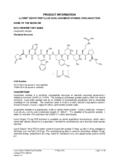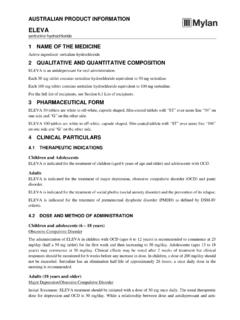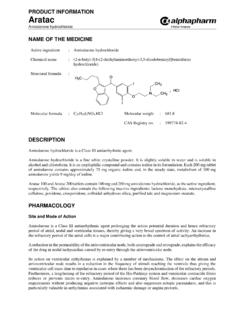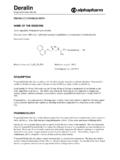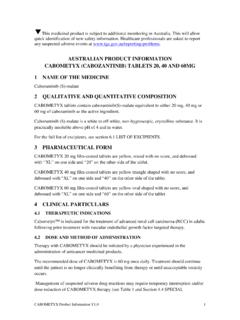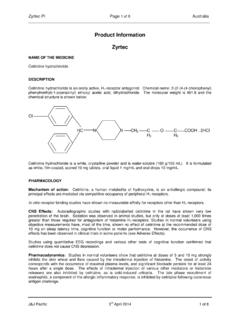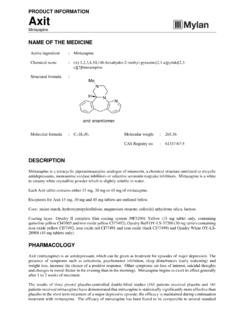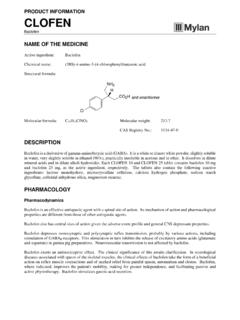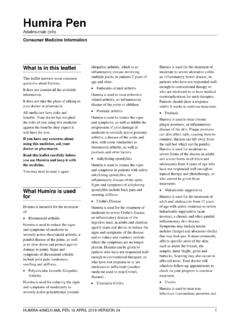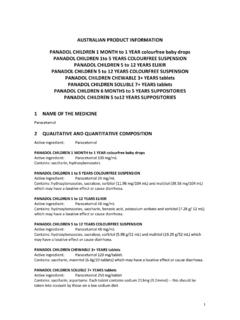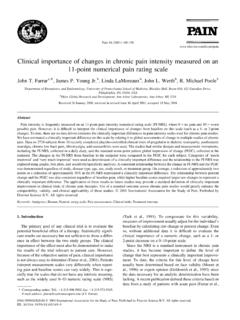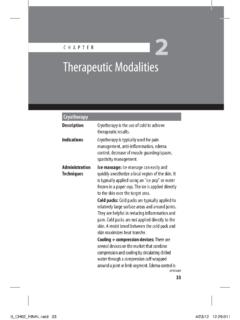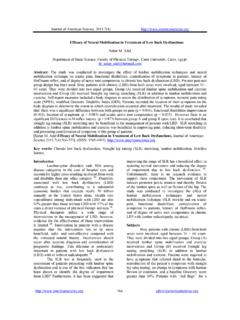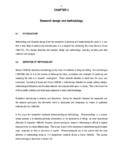Transcription of AUSTRALIAN PRODUCT INFORMATION PANADOL …
1 1 AUSTRALIAN PRODUCT INFORMATION PANADOL OSTEO (PARACETAMOL) TABLETS 1 NAME OF THE MEDICINE Paracetamol 2 QUALITATIVE AND QUANTITATIVE COMPOSITION Active ingredient: Paracetamol 665 mg/tablet Excipients: For the full list of excipients, see section List of Excipients. 3 PHARMACEUTICAL FORM White to off-white film coated capsule shaped tablets with flat edges. Embossed with the logo 8 on the front face and plain on the back face. 4 CLINICAL PARTICULARS THERAPEUTIC INDICATIONS PANADOL OSTEO provides effective relief from persistent pain for up to 8 hours. Effective for the relief of persistent pain associated with osteoarthritis and muscular aches and pains such as backache. Provides effective temporary relief of pain and discomfort associated with: headache, tension headache, cold and flu, period pain , toothache and pain after dental procedures. Reduces fever. DOSE AND METHOD OF ADMINISTRATION Adults and children aged 12 years and over: 2 caplets swallowed whole three times a day every 6 to 8 hours.
2 Do not chew or suck, as it impairs the sustained release properties. Maximum of 6 caplets in 24 hours. Do not use for more than a few days at a time in adults except on medical advice. Children under 12 years: Not recommended for children under the age of 12 years. Should not be used for more than 48 hours for children aged 12 17 years except on medical advice. Take with water or other fluid. Can be taken with or without food. Doses should be equally spaced throughout the day. The caplets must not be crushed. Do not exceed the stated dose. 2 The lowest dose necessary to achieve efficacy should be used for the shortest duration of treatment. Should not be used with other paracetamol-containing products. Minimum dosing interval: 6 hours. Maximum daily dose for children 12 years of age to adults: 4000 mg. CONTRAINDICATIONS Contraindicated in patients with a previous history of hypersensitivity to paracetamol or to any of the excipients.
3 SPECIAL WARNINGS AND PRECAUTIONS FOR USE Identified precautions Contains paracetamol. Do not use with any other paracetamol- containing products. The concomitant use with other products containing paracetamol may lead to an overdose. Paracetamol overdose may cause liver failure which may require liver transplant or lead to death. If symptoms persist, medical advice must be sought. Keep out of sight and reach of children. Use in hepatic impairment Paracetamol should be used with caution in patients with impaired liver function: Underlying liver disease increases the risk of paracetamol-related liver damage. Patients who have been diagnosed with liver impairment must seek medical advice before taking this medication. Cases of hepatic dysfunction/failure have been reported in patients with depleted glutathione levels, such as those who are severely malnourished, anorexic, have a low body mass index, are chronic heavy users of alcohol or have sepsis.
4 In patients with glutathione depleted states the use of paracetamol may increase the risk of metabolic acidosis. Use in renal impairment Paracetamol should be used with caution in patients with impaired kidney function: Administration of paracetamol to patients with moderate to severe renal impairment may result in accumulation of paracetamol conjugates. Patients who have been diagnosed with kidney impairment must seek medical advice before taking this medication. Use in the elderly No data available. 3 Paediatric use Not recommended for children under 12 years of age. Effects on laboratory tests No data available. INTERACTIONS WITH OTHER MEDICINES AND OTHER FORMS OF INTERACTIONS The following interactions with paracetamol have been noted: The anticoagulant effect of warfarin and other coumarins may be enhanced by prolonged regular daily use of paracetamol with increased risk of bleeding; occasional doses have no significant effect.
5 Anticoagulant dosage may require reduction if paracetamol and anticoagulants are taken for a prolonged period of time. Paracetamol absorption is increased by substances that increase gastric emptying, metoclopramide. Paracetamol absorption is decreased by substances that decrease gastric emptying, propantheline, antidepressants with anticholinergic properties, and narcotic analgesics. Paracetamol may increase chloramphenicol concentrations. The risk of paracetamol toxicity may be increased in patients receiving other potentially hepatotoxic drugs or drugs that induce liver microsomal enzymes such as alcohol and anticonvulsant agents. Paracetamol excretion may be affected and plasma concentrations altered when given with probenecid. Cholestyramine reduces the absorption of paracetamol if given within 1 hour of paracetamol. FERTILITY, PREGNANCY AND LACTATION Effects on fertility No data available. Use in pregnancy Pregnancy Category A Paracetamol has been taken by a large number of pregnant women and women of childbearing age without any proven increase in the frequency of malformations or other direct or indirect harmful effects on the foetus having been observed.
6 As with the use of any medicine during pregnancy, pregnant women should seek medical advice before taking paracetamol. The lowest effective dose and shortest duration of treatment should be considered. Use in lactation Paracetamol is excreted in breast milk. Human studies with paracetamol have not identified any risk to lactation or the breast-fed offspring. These results are based on immediate release preparations 4 of paracetamol. There is no data available on the excretion of sustained-release paracetamol preparations in breast milk. However, it is not expected that PANADOL OSTEO would provide any increase in the excretion of paracetamol in breast milk as this PRODUCT is designed to maintain rather than increase plasma paracetamol concentrations compared to immediate release preparations. Maternal ingestion of paracetamol in usual analgesic doses does not appear to present a risk to the breastfed infant.
7 EFFECTS ON ABILITY TO DRIVE AND USE MACHINES The effects of this medicine on a person's ability to drive and use machines were not assessed as part of its registration. ADVERSE EFFECTS (UNDESIRABLE EFFECTS) Reporting suspected adverse effects Reporting suspected adverse reactions after registration of the medicinal PRODUCT is important. It allows continued monitoring of the benefit-risk balance of the medicinal PRODUCT . Healthcare professionals are asked to report any suspected adverse reactions at Adverse events from historical clinical trial data are both infrequent and from small patient exposure. Accordingly, events reported from extensive post-marketing experience at therapeutic/labelled doses and considered attributable are tabulated below by System Organ Class and frequency. The following convention has been utilised for the classification of undesirable effects: very common ( 1/10), common ( 1/100, <1/10), uncommon ( 1/1,000, <1/100), rare ( 1/10,000, <1/1,000), very rare (<1/10,000), not known (cannot be estimated from available data).
8 Adverse event frequencies have been estimated from spontaneous reports received through post-marketing data. Table 1: Post marketing data Body System Undesirable Effect Frequency Blood and lymphatic system disorders Thrombocytopenia Very rare Immune system disorders Anaphylaxis Cutaneous hypersensitivity reactions including, among others, skin rashes, angioedema, Stevens Johnson syndrome and Toxic Epidermal Necrolysis. Very rare Respiratory, thoracic and mediastinal disorders Bronchospasm, especially in patients sensitive to aspirin and other NSAIDS Very rare Hepatobiliary disorders Hepatic dysfunction Very rare 5 OVERDOSE Poisons INFORMATION Centre If an overdose is taken or suspected, contact the Poisons INFORMATION Centre immediately for advice (131 126), or the patient should go to the nearest hospital straight away. This should be done even if they feel well because of the risk of delayed, serious liver damage (see ADVERSE EFFECTS).
9 Because PANADOL OSTEO is a sustained-release formulation of paracetamol, absorption will be prolonged in overdose. It is recommended that for the management of overdose, where PANADOL OSTEO is suspected, that an additional plasma paracetamol level be obtained 4-6 hours after the initial measurement. If either level is above or close to the treatment line on the paracetamol overdose nomogram, administration of antidote would be indicated. Treatment Paracetamol overdose may cause liver failure which may require liver transplant or lead to death. Acute pancreatitis has been observed, usually with with hepatic dysfunction and liver toxicity. Immediate medical management is required in the event of an overdose, even if the symptoms of overdose are not present. Administration of N-acetylcysteine may be required. In cases of overdosage, methods of reducing absorption of ingested drug are important.
10 Activated charcoal may reduce absorption of the medicine if given within one hour after oral ingestion. In patients who are not fully conscious or have impaired gag reflex, consideration should be given to administering activated charcoal via a nasogastric tube, once the airway is protected. 5 PHARMACOLOGICAL PROPERTIES PHARMACODYNAMIC PROPERTIES Mechanism of action Paracetamol is a para-aminophenol derivative that exhibits analgesic and anti-pyretic activity. Its mechanism of action is believed to include inhibition of prostaglandin synthesis, primarily within the central nervous system. It does not possess anti-inflammatory activity. It provides relief from mild to moderate pain and fever. The combination of immediate release and sustained release paracetamol provides pain relief, which may last up to 8 hours. Clinical trials Chronic pain In patients with pain associated with osteoarthritis of the knee, PANADOL OSTEO (2 tablets taken three times daily) and standard immediate release paracetamol (2 tablets taken 4 times daily) were clinically equivalent at a total daily dose of 4 g based on patient global assessment after treatment for 7 days.
